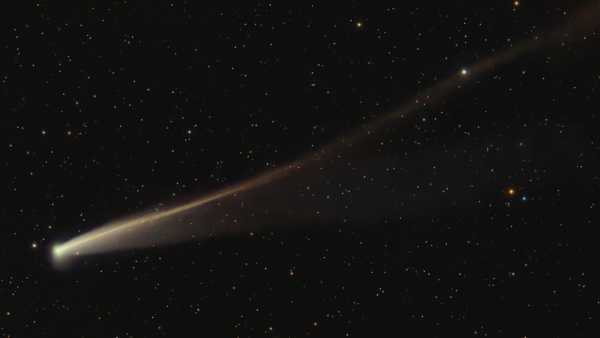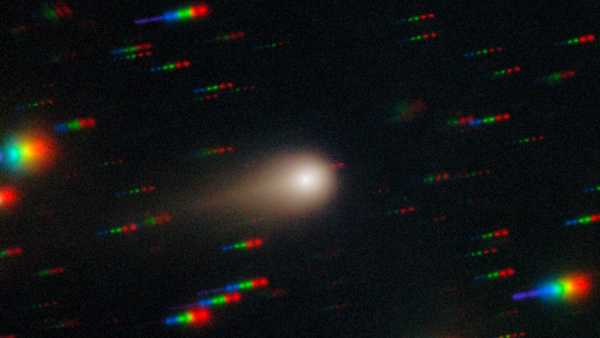
An image of the Small Magellanic Cloud taken by the Herschel Space Observatory. (Image Credit: Universal History Archive/Universal Images Group via Getty Images)
Astronomers have found startling evidence that one of the galaxies near our own is being destroyed by its neighbor.
Located about 200,000 light-years from Earth, the Small Magellanic Cloud (SMC) is a dwarf galaxy that, along with its neighbor, the Large Magellanic Cloud (LMC), is gravitationally bound to our Milky Way. Both satellite galaxies orbit ours and will collide and merge with the Milky Way in a few billion years.
Before that distant moment, however, a new analysis of stellar motions suggests that the SMO may face a different fate: being torn apart by its larger neighbor. The grim prediction was published April 10 in the Astrophysical Journal Supplement Series.
“When we first got this result, we suspected that there might be a flaw in our analysis method,” co-author Kengo Tachihara, an astronomer at Nagoya University in Japan, said in a commentary. “However, upon closer inspection, the results were undeniable, and we were surprised.”
In addition to our Milky Way and the LMC, the SMC is part of the Local Group, a collection of about 30 galaxies in our cosmic neighborhood. The triangular region of the SMC, made up of several hundred million stars, is relatively small, measuring just 7,000 light-years across compared to our own galaxy's 100,000 light-years, and its orbit around the LMC takes about 900 million years, compared to about 1.5 billion years around the Milky Way.
However, despite the Small Magellanic Cloud's proximity to us, its relatively small size and the obscuring effects of interstellar gas and dust make it difficult to observe.
To get a deeper look into the inner workings of the SMC, the researchers turned to the European Space Agency’s recently decommissioned Gaia spacecraft, which had mapped the locations of some 2 billion stars within the Milky Way and surrounding galaxies. Analyzing the third release of Gaia data, astronomers tracked the movements of some 7,000 stars within the SMC and made a shocking discovery.
“The stars in the LMC were moving in opposite directions on either side of the galaxy, as if they were being torn apart,” Tachihara said. “Some of these stars were moving closer to the LMC, while others were moving away from it.”
According to Tachihara, this unexpected movement indicates that the LMC is pulling its smaller companion along with it, “leading to its gradual destruction.”
The researchers' analysis also showed that, unlike our own Milky Way, the massive stars tracked within the LMC were not orbiting their host galaxy. This could indicate that there is something wrong with our understanding of the galaxy's mass and its history of interactions with the LMC and the Milky Way.
Further study of these mysteries could reveal key insights. The low metallicity and weak gravitational potential energy of the SMC mean that it resembles what many galaxies might have looked like in their youth in the early universe. This could mean that studying the interactions between the SMC and LMC could help astronomers understand how galaxies formed over time.
“We can't get a 'bird's eye view' of the galaxy we live in, so the Small Magellanic Cloud and the LMC are the only galaxies where we can observe the details of star motion,” Tachihara said. “This study is significant because it allows us to study the process of star formation in the context of the motion of stars throughout the galaxy.”
TOPICS Milky Way
Sourse: www.livescience.com





